Yap — The Island of Stone Money
Travel makes me learn geography.
I’ve always known that the Pacific Ocean is full of islands, but I’d never understood that they’re divided roughly into three culturally distinct groups: Melanesia, Micronesia and Polynesia. Melanesia runs from New Guinea down to Fiji. These islands were populated first, perhaps as much as 40,000 years ago. Micronesia (see map above) was inhabited next, starting with Guam 4000 years ago. Today, Micronesia consists of the Federated States of Micronesia (aka FSM) plus its neighbors: Guam, Palau, Nauru and the Marshall Islands. Finally, about 1000 years ago, ancient mariners boldly sailed out to explore the rest of the Pacific: Tonga, Tahiti, Hawaii, Easter Island, and last of all New Zealand. That’s Polynesia.
FSM is an independent country and a member of the UN. At the same time, it also enjoys a Compact of Free Association with the United States. This means that FSM citizens are welcomed into the US and vice versa. So, coming into the state of Yap was as easy as entering Guam. English is spoken and US dollars are used here.
But that’s where the similarities between Guam and Yap end. Remember Guam with its 1.5 million tourists per year? Yap is lucky to get 1500 tourists per year. (They’d like to get more.) Although the flight from Guam to Yap is just an hour, there’s so little traffic between these two islands that United Airlines only flies twice a week. Even then, my plane from Guam to Yap was half full.
Welcome to a quiet, undiscovered paradise!
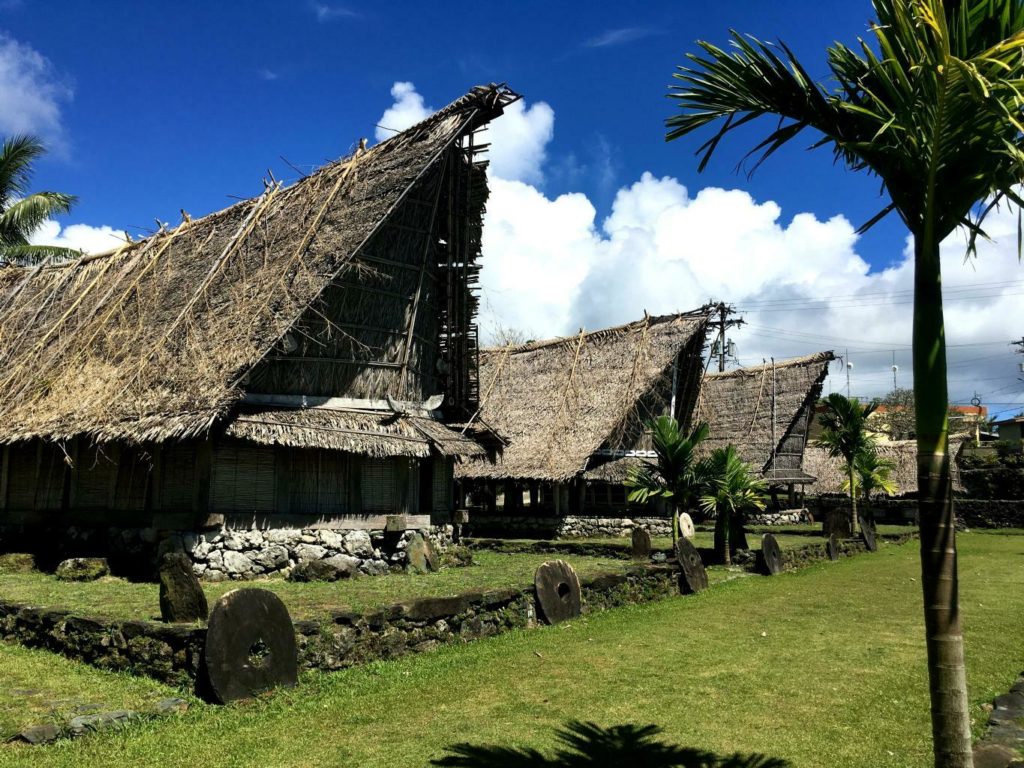
Unlike Guam, there are no fancy, hi-rise hotels lining Yap’s beaches. Instead, people live in rustic villages centered around a meeting house. Around each meeting house are large round disks of crystalline limestone carved from quarries in Palau 450 kms away and ferried here by sailing canoe. These are Yap’s famous Stone Money that I came here to see.
Some of these stone “coins” are as much at 3 meters in diameter and weigh a few tons. Each disk — or “Rai” — has a hole carved in the center to make it easier to transport. But the money is rarely moved. These Rai have sat for generations next to each village’s meeting house.
One Rai might purchase a farm, pay a dowry, or be used as collateral for a loan (in US dollars). Transfer of ownership is done orally. No written record is kept of which stone belongs to whom. Everyone just knows.
Much like the Federal Reserve or the gold in Fort Knox, this stone money serves as a symbolic representation of wealth. Thus, Yap’s money is either a primitive and hard-to-carry currency … or a modern form of banking. For more information about Yap’s stone money, please click here or here.

With reefs on all sides of the island, there’s excellent scuba diving in Yap. I’ve posted no underwater photos here because I don’t have an underwater camera. Besides, we’ve all seen professional photos of sharks, mantas, colorful fish and coral reefs, right? Yap has all these things … but without the tourists. On my dives with Beyond the Reef, I had the whole dive boat, a guide and pilot to myself and it wasn’t expensive. Nice!
When I wasn’t scuba diving, I hiked around Yap on its manicured hiking trails. These mossy stone paths were created centuries ago to connect each village with its neighbors. Although Yap has several paved roads, the ancient trails are still maintained. Note: There are no trail signs or maps anywhere, so you’ll need a guide or an app like maps.me to find your way. These trails are a delightful way to explore Yap’s lush jungles. Along the trails, there are occasional rest huts and even a few downed aircraft from World War II.
With few tourists, Yapese welcome everyone who comes here. These two fishermen insisted that I join them for a beer while they cooked their dinner … which was a very large Green Turtle.
Timothy and Mike graciously asked me not to take a photo of the turtle they were grilling because they didn’t want it seen on the internet. Although Green Turtles are an endangered and protected species, Tim and Mike explained that turtle hunting is legally permitted for a few months on Yap every year. Their village catches and eats 2 or 3 turtles a year, and only for special, ceremonial feasts. Well, okay. But I lost my appetite seeing that beautiful turtle on the grill. I didn’t stay for the feast.
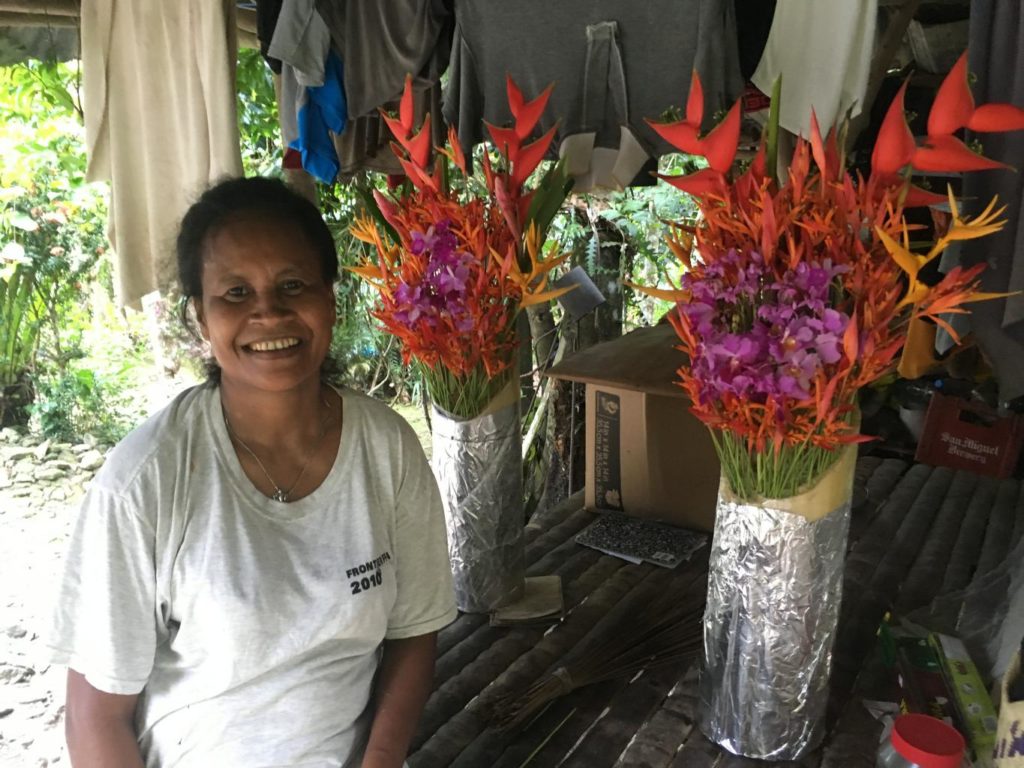
Here’s another friendly Yapese. Her name is Jane. She’s a florist. She gave me a tour of her huge, outdoor orchid garden. With plenty of rain, high humidity and warm weather, Yap is a year-round greenhouse. It’s easy to grow beautiful flowers here.
If you should find you way to Yap, I recommend the Hotel Oceania. The rustic bungalows, the fresh fish and the hammocks on the balcony overlooking the water are simply divine. Yap is someplace I might come back to.



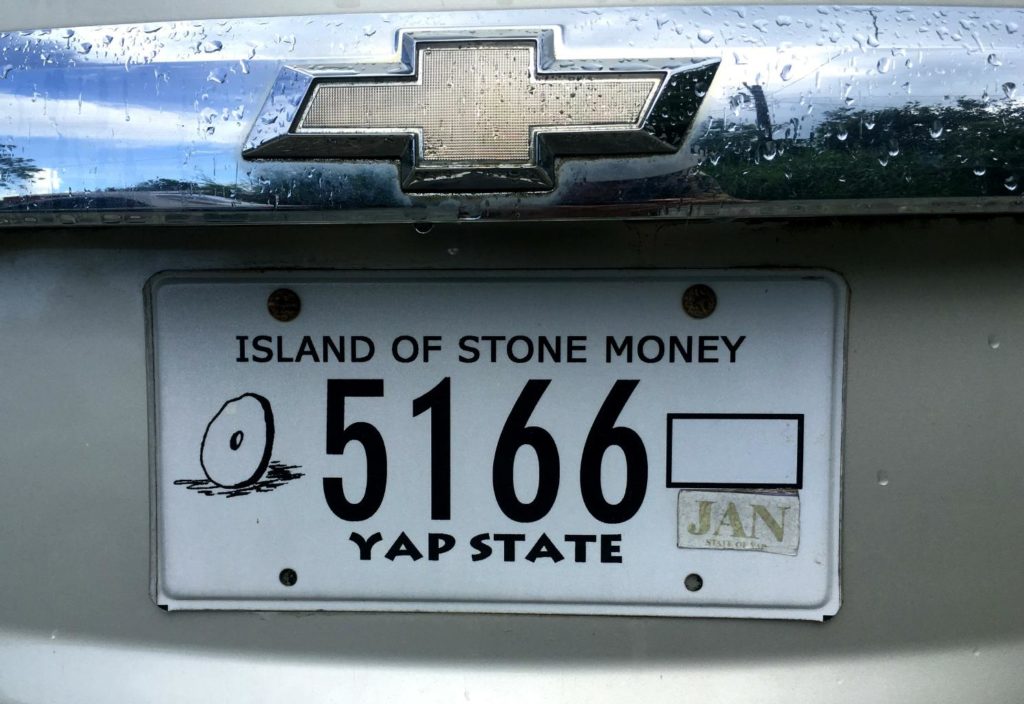
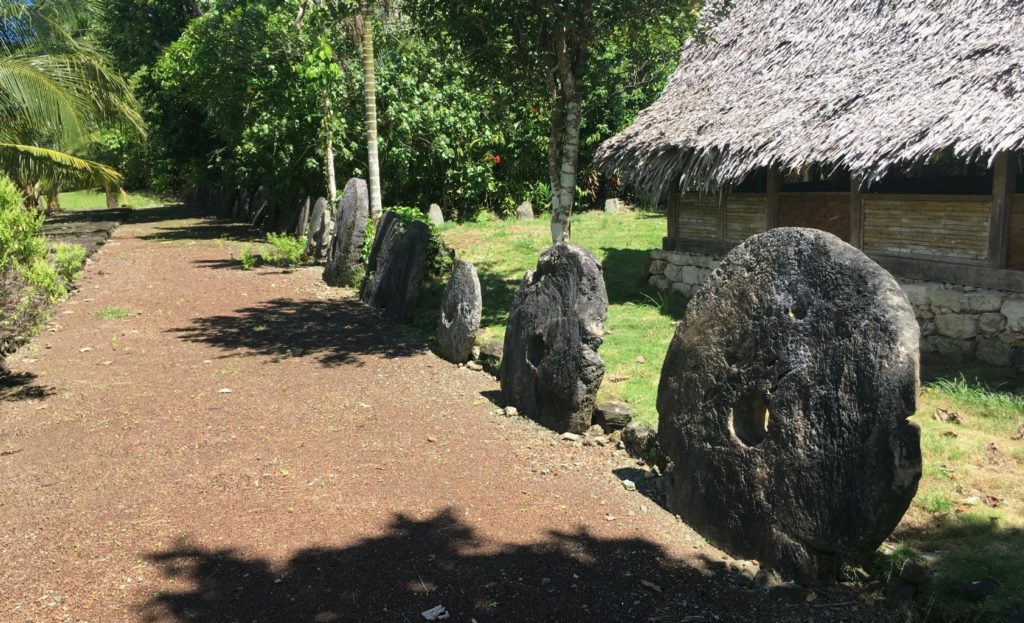
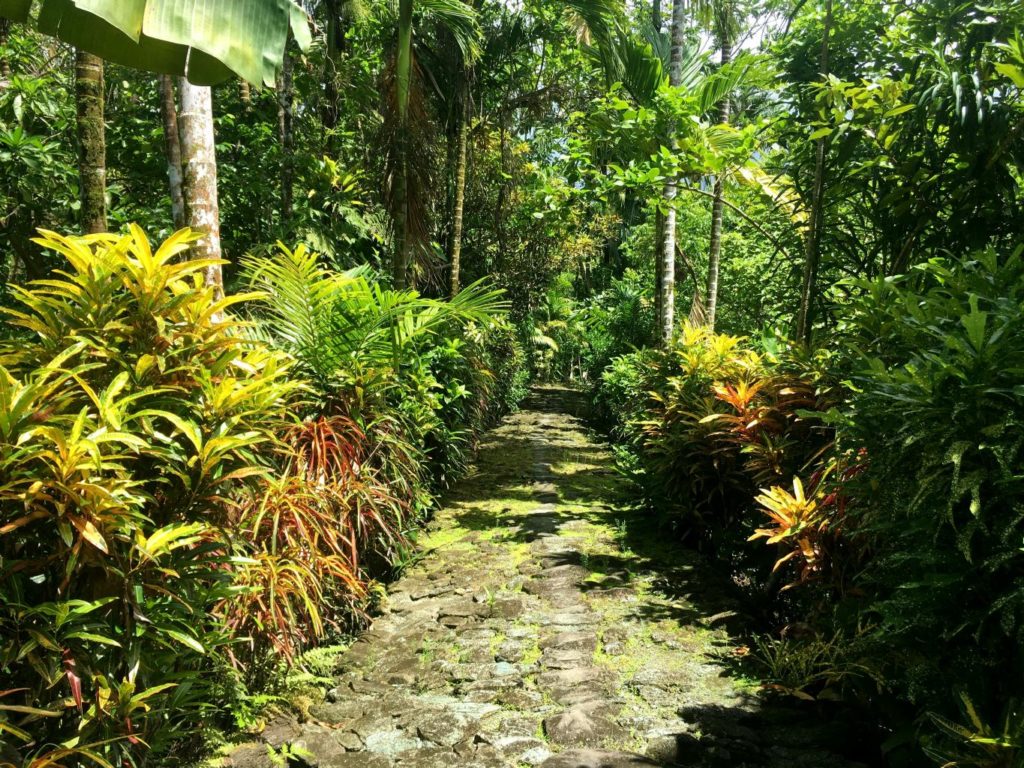
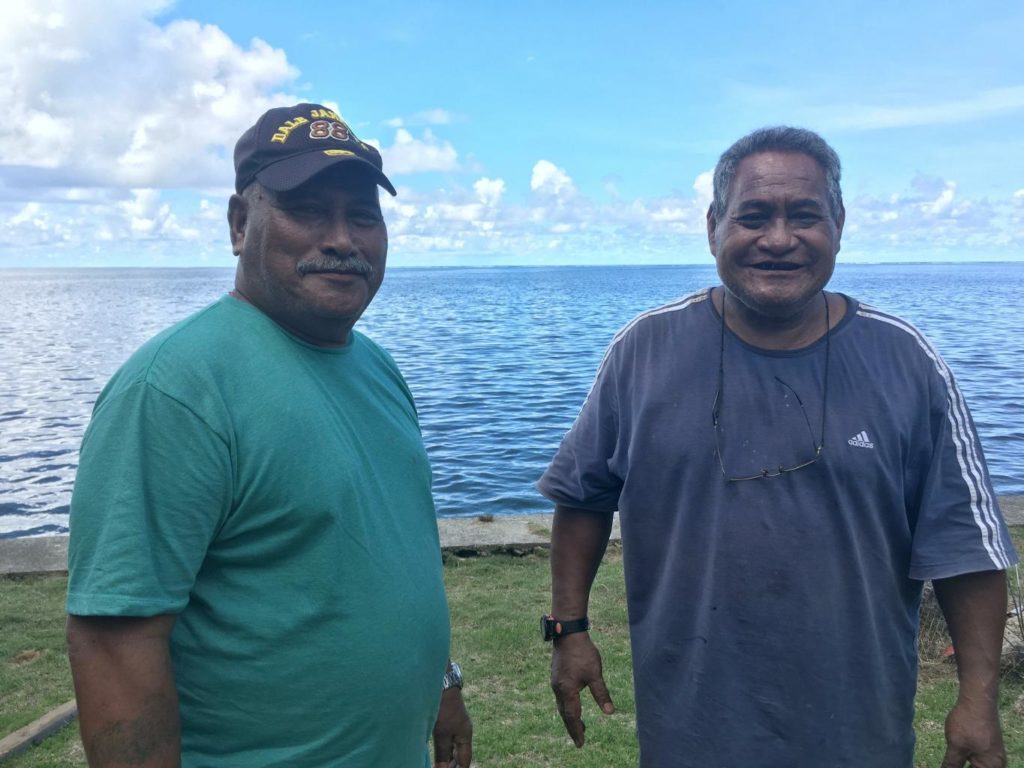
You have found yet another lovely place hardly anyone has ever heard of much less been too. Keep it up my friend.
The world is like a treasure chest, full of hidden wonders. There are still many more to find, I’m sure.